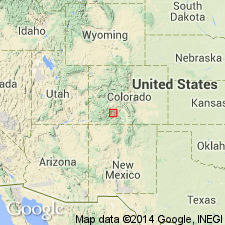
- Usage in publication:
-
- Wason Park Rhyolite*
- Modifications:
-
- Named
- Dominant lithology:
-
- Rhyolite
- AAPG geologic province:
-
- San Juan Mountains province
Summary:
Named for Wason Park, Mineral Co, CO, San Juan Mountain province where it forms the floor of the Park, on southern flank of La Garita Mountains, northeast of Creede, Wason Park is the type area. Is a crystal-rich densely welded tuff with 25 to 30 percent phenocrysts set in a reddish-brown lithoidal matrix. The phenocrysts are predominately plagioclase and sanidine with minor biotite and magnetite. A dense black vitrophyre (10-15 ft thick) is present at base of formation. Is 600 to 700 ft thick in central San Juan Mountains. Wedges out toward Continental Divide. A tongue of Huerto separates Mammoth Mountain and Wason Park Rhyolites. Assigned to the middle and late Tertiary, generally younger than Farmers Creek Rhyolite and older than Wason Park Rhyolite.
Source: GNU records (USGS DDS-6; Denver GNULEX).
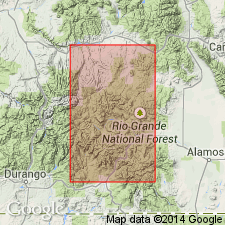
- Usage in publication:
-
- Wason Park Rhyolite*
- Modifications:
-
- Age modified
- AAPG geologic province:
-
- San Juan Mountains province
Summary:
Age changed from middle and late Tertiary to Oligocene. Erupted after the tuffs of (ascending order): 1) Fish Canyon which is dated at 27.2 m.y.; 2) Carpenter Ridge; and 3) Sevenmile Creek, and before Snowshoe Mountain, Nelson Mountain, and Rat Creek Quartz Latites. These quartz latites preceded the Fisher Quartz Latite which has an age of 26.4 m.y. The extent of the Wason Park in the San Juan field taken from previous reports is in the San Juan Mountain province.
Source: GNU records (USGS DDS-6; Denver GNULEX).
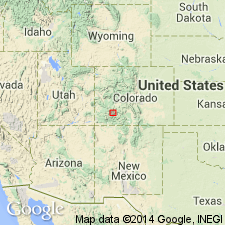
- Usage in publication:
-
- Wason Park Tuff*
- Modifications:
-
- Geochronologic dating
- AAPG geologic province:
-
- San Juan Mountains province
Summary:
Is a less than 26.7 m.y. (K-Ar) or late Oligocene crystal-rich rhyolite from the Creede area caldera. Has reverse magnetic polarity. Had an estimated initial volume of 200-300 cubic km.
Source: GNU records (USGS DDS-6; Denver GNULEX).
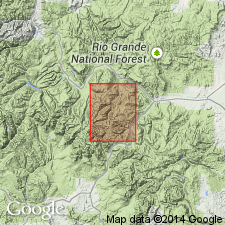
- Usage in publication:
-
- Wason Park Tuff*
- Modifications:
-
- Redescribed
- Dominant lithology:
-
- Tuff
- AAPG geologic province:
-
- San Juan Mountains province
Summary:
Mapped in Blue Park and Wason Park areas of Mineral Co in the San Juan Mountain province. Redescribed from Wason Park Rhyolite to Wason Park Tuff. Described as a red rhyolitic ash-flow tuff containing about 30 percent phenocrysts of tabular feldspar, platy biotite, and sparse pyroxene. White tridymitic collapsed pumice fragments are characteristic. Derived from the general area of the Creede caldera. Wedged out against resurgent cores of La Garita and Bachelor? calderas. Spread over the Mammoth Mountain Tuff. Forms an excellent marker unit in the central part of the San Juan volcanic field. Assigned to the Oligocene.
Source: GNU records (USGS DDS-6; Denver GNULEX).
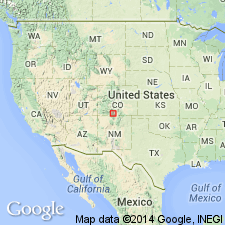
- Usage in publication:
-
- Wason Park Tuff*
- Modifications:
-
- Overview
- AAPG geologic province:
-
- San Luis basin
- San Juan Mountains province
Summary:
Is a densely welded ash-flow sheet of moderately phenocryst rich low-silica rhyolite believed to have been erupted from a source now subsided beneath the Creede caldera. Detailed lithologic description. Considered to be a minor unit of the San Juan volcanic field. Rests on Carpenter Ridge Tuff. Overlain by Snowshoe Mountain Tuff or by basalt flows of Hinsdale Formation. Where confined by wall of La Garita caldera, formation is 300 m thick. Has many scattered remnants no more than 50 m thick. Age bracketed by sub- and superjacent units. Has reverse remanent magnetic polarity. Wason Park occurs in the San Luis basin and in the San Juan Mountain province, though areal extent not shown in this report.
Source: GNU records (USGS DDS-6; Denver GNULEX).
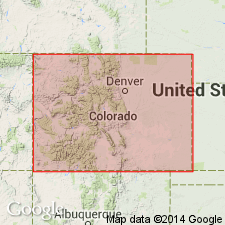
- Usage in publication:
-
- Wason Park Tuff*
- Modifications:
-
- Areal extent
- Overview
- AAPG geologic province:
-
- San Juan Mountains province
- San Luis basin
Summary:
Had an estimated volume of 100-500 cubic km. Has an age of greater than 26.4 and less than 26.7 m.y. Distribution map shows it in Mineral and Hinsdale Cos, CO in the San Juan Mountain province, in Rio Grande and Saguache Cos, CO in the San Luis basin. Source unknown. Is considered to be a simple cooling unit, spread over the central part of the San Juan volcanic field. Is largely confined to moats around the La Garita and Bachelor Mountain calderas where it rests on Mammoth Mountain Tuff. White pumice blocks characteristic of Wason Park are larger near the Creede caldera than at the distal ends of the sheet. These blocks may indicate proximity to the source.
Source: GNU records (USGS DDS-6; Denver GNULEX).
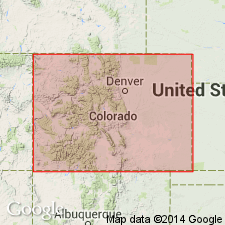
- Usage in publication:
-
- Wason Park Tuff*
- Modifications:
-
- Geochronologic dating
- Overview
- AAPG geologic province:
-
- San Juan Mountains province
Summary:
Is ash-flow sheet within Creede caldera in central San Juan Mountains of CO, San Juan Mountain province. High-resolution 40/39 Ar geochronology (unpublished data, M. Lanphere, USGS) yields age of 26.8 Ma [late Oligocene].
Source: GNU records (USGS DDS-6; Denver GNULEX).
For more information, please contact Nancy Stamm, Geologic Names Committee Secretary.
Asterisk (*) indicates published by U.S. Geological Survey authors.
"No current usage" (†) implies that a name has been abandoned or has fallen into disuse. Former usage and, if known, replacement name given in parentheses ( ).
Slash (/) indicates name conflicts with nomenclatural guidelines (CSN, 1933; ACSN, 1961, 1970; NACSN, 1983, 2005, 2021). May be explained within brackets ([ ]).

